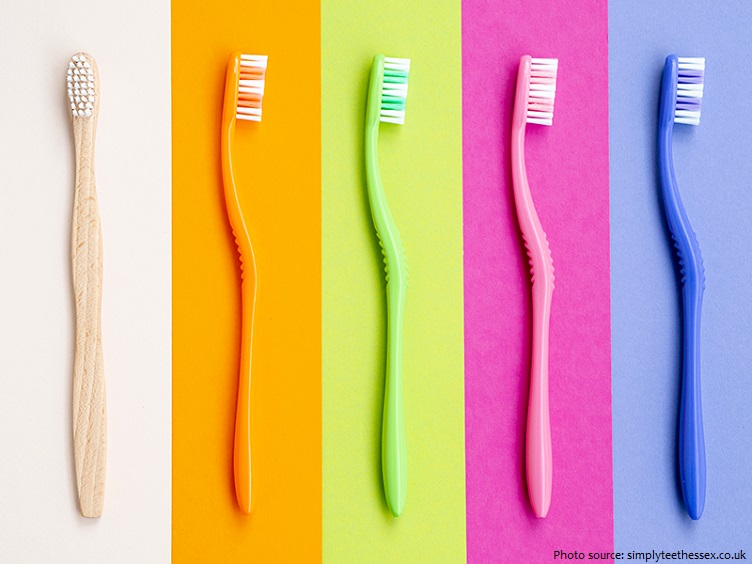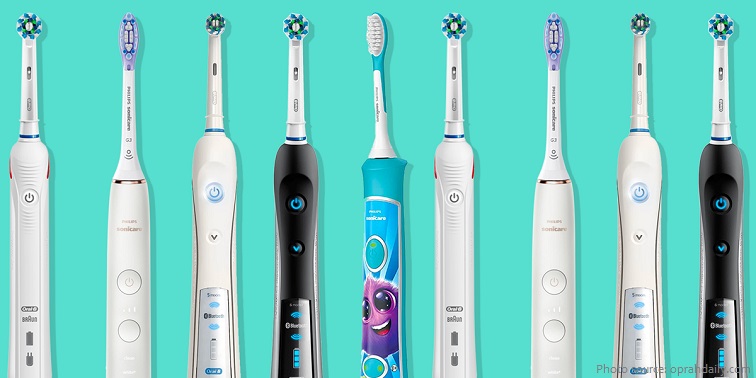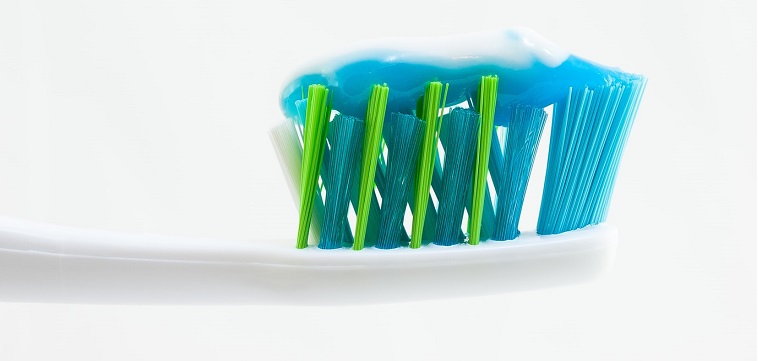
A toothbrush is an oral hygiene instrument used to clean the teeth, gums, and tongue.
It consists of a head of tightly clustered bristles, atop of which toothpaste can be applied, mounted on a handle which facilitates the cleaning of hard-to-reach areas of the mouth.
People have been cleaning their teeth for millennia, starting with the ancient Egyptians, who are thought to have scrubbed their choppers with a special powder made from ox hooves and eggshells as far back as 5000 BC.
In Sanskrit, the tooth wood is known as the dantakastha — danta meaning tooth, and kastha, a piece of wood. It is twelve finger-widths in length. The shortest is not less than eight finger-widths long, resembling the little finger in size. Chew one end of the wood well for a long while and then brush the teeth with it.”

The Greeks and Romans used toothpicks to clean their teeth, and toothpick-like twigs have been excavated in Qin Dynasty tombs. Chew sticks remain common in Africa, the rural Southern United States, and in the Islamic world the use of chewing stick miswak is considered a pious action and has been prescribed to be used before every prayer five times a day. Miswaks have been used by Muslims since the 7th century. Twigs of Neem Tree have been used by ancient Indians. Neem, in its full bloom, can aid in healing by keeping the area clean and disinfected. In fact, even today, Neem twigs called datun are used for brushing teeth in India, although not hugely common.
The Indian way of using tooth wood for brushing is presented by the Chinese Monk Yijing (635–713 CE) when he describes the rules for Monks in his book: “Every day in the morning, a monk must chew a piece of tooth wood to brush his teeth and scrape his tongue, and this must be done in the proper way. Only after one has washed one’s hands and mouth may one make salutations. Otherwise both the saluter and the saluted are at fault.”

About 800 years ago, the Chinese began fashioning proto-toothbrushes by attaching coarse animal hairs to bamboo or ivory handles – during the Middle Ages, travelers brought these devices to Europe.
In the 15th Century, the Chinese are believed to have invented the first natural bristle toothbrush made from the bristles from pigs’ necks attached to a bone or bamboo handle.
In 1690, the first recorded use of the actual word “toothbrush”. A man named Anthony Wood wrote in his autobiography that he had “bought a toothbrush” from another man. I say this is the first recorded use, but it’s not a stretch to assume people were calling these devices “toothbrushes” a bit earlier, it’s just Anthony’s writing is the first time we see the actual word. So he gets credit.

In the UK, William Addis is believed to have produced the first mass-produced toothbrush in 1780. In 1770, he had been jailed for causing a riot. While in prison he decided that using a rag with soot and salt on the teeth was ineffective and could be improved. After saving a small bone from a meal, he drilled small holes into the bone and tied into the bone tufts of bristles that he had obtained from one of the guards, passed the tufts of bristle through the holes in the bone and sealed the holes with glue. After his release, he became wealthy after starting a business manufacturing toothbrushes. He died in 1808, bequeathing the business to his eldest son. It remained within family ownership until 1996. Under the name Wisdom Toothbrushes, the company now manufactures 70 million toothbrushes per year in the UK.
The first patent for a toothbrush was granted to H.N. Wadsworth in 1857 (U.S.A. Patent No. 18,653) in the United States, but mass production in the United States did not start until 1885. The improved design had a bone handle with holes bored into it for the Siberian boar hair bristles.

During the 1900s, celluloid gradually replaced bone handles. Natural animal bristles were also replaced by synthetic fibers, usually nylon, by DuPont in 1938. The first nylon bristle toothbrush made with nylon yarn went on sale on February 24, 1938. By the turn of the 21st century nylon had come to be widely used for the bristles and the handles were usually molded from thermoplastic materials.
The earliest example of an electric toothbrush was first produced by Tomlinson Moseley. Sold as the Motodent, a patent was filed by his company, Motodent Inc on December 13, 1937. In Switzerland in 1954 Dr. Philippe Guy Woog invented the Broxodent. Woog’s electric toothbrushes were originally manufactured in Switzerland (later in France) for Broxo S.A.
The oscillating rotating toothbrush is a type of electric toothbrush which was introduced by Oral B in the 1990s and is known to be effective for plaque removal and the reduction and management of gingivitis.

The newest developments in this field are ultrasonic toothbrushes, which use ultrasonic waves to clean the teeth. In order for a toothbrush to be considered “ultrasonic” it has to emit a wave at a minimum frequency of 20,000 Hz or 2,400,000 movements per minute.
A musical toothbrush is a type of manual or powered toothbrush designed to make tooth brushing habit more interesting. It is more commonly introduced to children to gain their attention and positively influence their tooth brushing behavior.
In January 2003, the toothbrush was selected as the number one invention Americans could not live without according to the Lemelson-MIT Invention Index.

The world’s most expensive toothbrush is made from titanium and costs $4,375.
Grigori Fleicher (Russia) has the largest toothbrushes collection in the world of 1,320 as of 5 November 2008.
The longest line of toothbrushes consist of 41,769 toothbrushes, and was achieved by Sharon Lipinski and Christine Forster (both USA) in Loveland, Colorado, USA, on 26 February 2019. This record was attempted to raise awareness for children’s oral health and the final line measured 5,746.4 m (18,853 ft 0.22 in).